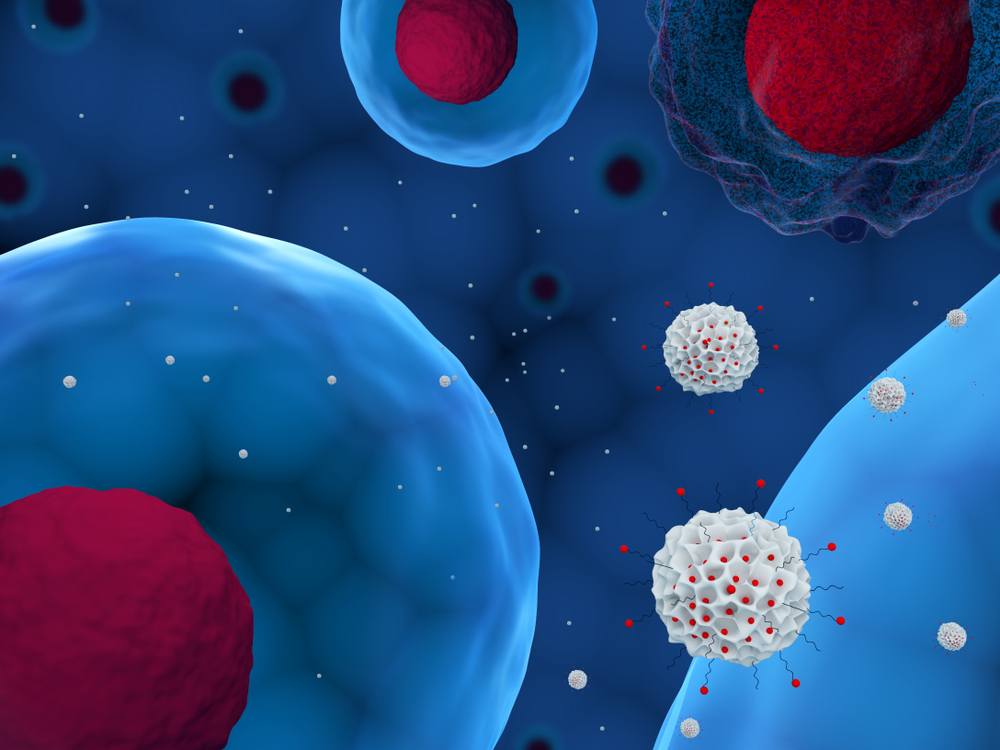Bone Marrow Transplant Can Replace Overactive Immune Cells, Preventing Inflammation in MS, Study Says
Written by |

A bone marrow transplant can remove the majority of overactive immune T cells from the central nervous system (CNS) in patients with active relapsing-remitting multiple sclerosis (RRMS), allowing the body to replace them with healthy ones, a study has found.
This opens up new treatment avenues to curb immune system impairment and reduce the inflammation associated with the disease.
The study, “Extensive intrathecal T cell renewal following hematopoietic transplantation for multiple sclerosis,” was published in the journal JCI Insight.
Autologous hematopoietic stem cell transplants (AHSCT) are a type of bone marrow transplant in which healthy hematopoietic stem cells — blood cell precursors, or immature cells that can develop into all types of blood cells — are taken from patients, who then undergo chemotherapy to suppress their own immune systems. That process is called immunoablation, and paves the way for a “reset” of the body’s immune system.
After this immunoablation is complete, the collected stem cells are then re-infused into’s the patient’s body to reconstitute the immune system and reactivate it.
AHSCT has been explored as a form of treatment for those with aggressive autoimmune disorders, including multiple sclerosis (MS), due to its ability to replace a person’s overactive immune cells with healthy ones.
The HALT-MS study, a previous Phase 2 trial (NCT00288626), showed that AHSCT was able to stop disease progression without maintenance disease-modifying therapy in people with active RRMS. That led to long-lasting periods of remission spanning at least five years.
Despite the demonstrated benefits of AHSCT, scientists are still unsure of the exact mechanisms underlying its efficacy. One possibility is that AHSCT may lead to the replacement of overactive immune T-cells that infiltrate the central nervous system — composed of the brain and spinal cord — and are known to be the drivers of inflammation in MS.
To test this possibility, the researchers analyzed the pool of immune T-cells found in the cerebrospinal fluid (CSF) and peripheral blood of a subset of people with RRMS who had received a stem-cell transplant during the HALT-MS trial. CSF is the liquid that circulates in the brain and spinal cord, while peripheral blood is the blood that circulates throughout the body.
The analyses were performed on samples of CSF and blood that were collected before the AHSCT and up to four years following the procedure.
The findings revealed that more than 90% of the original pool of immune cells found in the CSF samples had been replaced by new immune cells that formed as a consequence of the transplanted hematopoietic stem cells.
Moreover, the immune cells’ replacement persisted over time: 91.8% of the original immune T-cells found in patients’ CSF were undetectable two years after the transplant, and 93.5% were not found after four years.
Further analyses showed that approximately 60% of the pool of immune cells found in the participants’ CSF also were detected in their peripheral blood before receiving the transplant.
Although the degree of similarity between the two pools of immune cells dropped to 40.6% two years after the procedure, the effects of treatment were found to be consistent in both CSF and peripheral blood.
“These results … suggest that peripheral blood could serve as a surrogate for CSF to define mechanisms associated with efficacy in future studies of AHSCT,” the researchers said.
“Taken together, our findings support the hypothesis that AHSCT therapy removes the majority of T cells existing in the intrathecal compartment of patients with active RRMS, likely, including pathogenic [inflammatory] T cells, and induces the generation of a newly differentiated immune repertoire that persists in both intrathecal and peripheral blood compartments,” they said.
The team believes their results can open up new avenues of research for future studies of AHSCT therapy as well as for “other immunomodulatory intervention strategies for MS.”





